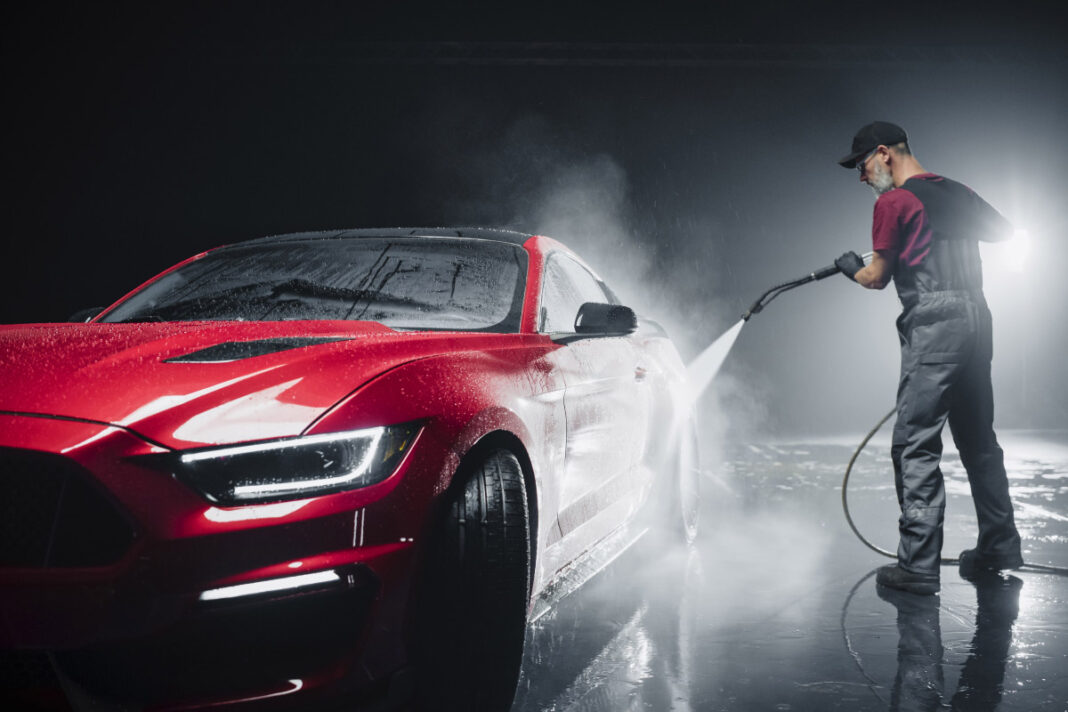Cars can get dirty with road grime and dust if driven daily. When parked under trees, bird droppings can even dull the finish and make the vehicle look old. That’s why regular cleaning is important. Washing and waxing are important steps to keep a car shiny and new. They protect the paint, prevent rust, and maintain the vehicle’s resale value. However, when performing these processes, one must use the right DIY car-washing tips.
Use the Right Supplies
Using the wrong car cleaning products can cause scratches on the body or strip its protective coatings. One should use car-specific soap, microfiber towels, soft sponges or wash mitts, and separate buckets for washing and rinsing. A hose with a gentle spray nozzle helps, but a pressure washer on a low setting can be used for stubborn dirt. When it comes to wax, there are options like paste wax, liquid wax, and spray wax. Each of these car wax types has different features and benefits.
Begin With a Pre-Rinse
Before applying soap, one should rinse the car thoroughly with water to loosen dirt and remove loose debris. Skipping this step risks dragging grit across the surface while scrubbing, which can lead to swirl marks or scratches. One should pay special attention when cleaning the wheel wells and lower panels, as these areas collect the most grime.
Remove Contaminants
A simple, quick wash is not enough. Before waxing, one should take time to rid the car of all dirt and grime. Skipping this step can trap dirt and grime underneath the wax, causing bumps on the surface. So, if there is any dirt on the surface of the car, whether on the bumpers, rockers, or lower part of the doors, one should clear them out. Once the car is completely clean and decontaminated, it’s time for the final wipe-down. One can simply spray some mist and wipe it down with a soft cloth.
Pick a Dry Place
Waxing the car out in the sun is not advisable. Direct heat and sunlight can cause the wax to leave behind uneven results. It can also require one to use more wax than necessary. And if it starts to rain, that wouldn’t help either. Rain could leave water spots on the car, which can be hard to get rid of later. For the best results, it is better to wax the vehicle in a cool and dry place, like a garage. One should also make sure the place is well-lit. If a person has no choice but to wax the car outdoors, they should ensure the conditions are right.
Apply Wax in Small Sections
It’s advisable to cover one section at a time when applying wax. One should take a small amount of wax on the applicator pad and not apply it directly on the paint. An applicator pad offers better control over the process and helps cover more surface area using small amounts of wax. Applying a consistent coat is key here. A consistent coat protects the paint from environmental damage and gives the car a smooth finish. One should continue applying in small sections until the whole car has been covered with the wax.
Let It Dry
The wax does not need much time to dry, so one must not leave it on longer than required. As it dries, one can take a break or look at the car’s interior. Once the wax is dry, one can try wiping a hand on the waxed surface. If there is no streaking, it is time to proceed with the rest of the cleaning process. When wiping a hand, one should check if the wax leaves a powdery residue on the fingers.
Wipe Off the Film
Removing the wax is a satisfying process. It can be quickly completed by simply wiping down the surface; just remember to use a microfiber cloth. The process does not require using pressure. If the wax does not come off easily, it might not be completely dry. It could also be because the wax layer is thicker than needed. It is usual for the first couple of wipes to be a bit resistant. Soon, the surface should turn smooth and slippery when the residue is gone. One should use the fresh part of the towel to buff out the wax.
Touch Up
If the surface has too much wax or isn’t completely dry, streaks could develop on the car’s surface. But these are easy to fix. One must simply redo the area with a small amount of wax. When done with the application, one should wipe it off completely. The wax should be kept away from badges, emblems, or textured and unpainted plastic, as it can discolor them. Instead, these materials should be buffed out with a clean towel. All-purpose cleaners can work wonders for stubborn marks on the plastic.
Don’t Forget Plastic Panels and Glass
Many car owners focus only on the painted surfaces. However, plastic panels and windows matter, too. Some waxes work well with them, while others leave a white residue. Using a trim-safe protectant before waxing or masking off the trim areas is a good idea. Glass can be cleaned with a separate automotive glass cleaner for a clear, streak-free finish.


